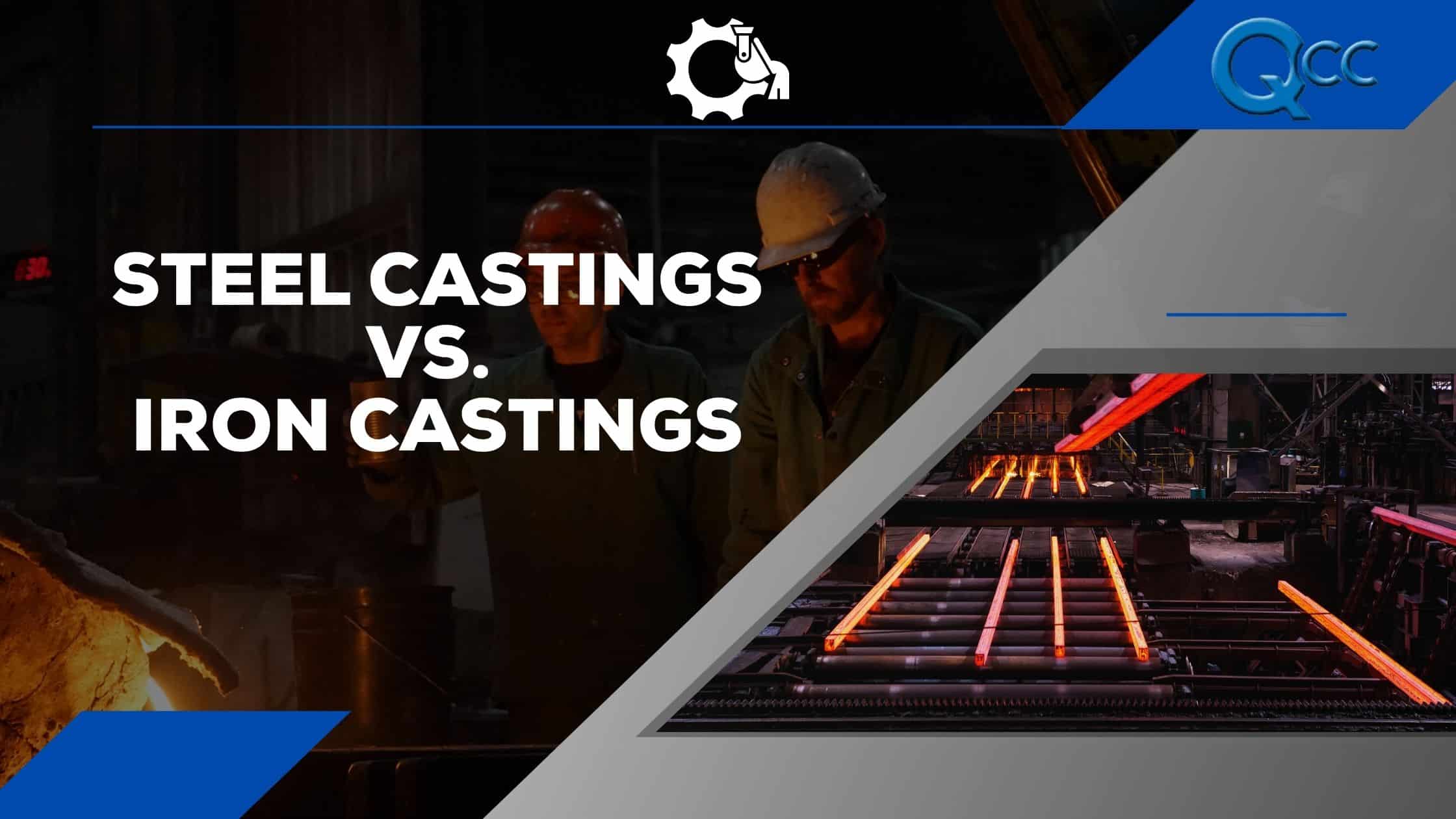Choosing between steel castings and iron castings is more than just a material decision, it can significantly impact your component’s performance, longevity, and cost. Both materials are widely used in metal casting, but they offer distinct advantages depending on the mechanical demands, environmental conditions, and industry requirements.
This guide will explore the key differences between iron castings and steel castings, breaking down their composition, properties, and practical uses so you can make informed decisions for your next project.
What Are Steel Castings?
Steel castings are made from either carbon steel or alloy steel, with a carbon content of 2% or less. This lower carbon concentration results in a material that is strong, tough, and highly adaptable. One of the greatest strengths of cast steel is its ability to be customized through alloying elements (such as manganese, nickel, or chromium) and heat treatment, allowing engineers to fine-tune properties like hardness, impact resistance, and tensile strength.
Cast steel is well known for its excellent mechanical performance, especially in applications where dynamic loading, pressure fluctuation, or extreme temperatures are involved. It maintains its toughness in both high-heat and cryogenic conditions, making it suitable for a broad spectrum of heavy-duty environments.
In industries that require components to endure high mechanical stress or variable conditions, cast steel is often the preferred choice. Its ductility and shock resistance far surpass that of cast iron, and its weldability and machinability make it easier to modify or repair when needed.
Typical Applications of Cast Steel:
-
Pressure-containing parts such as valves, fittings, and pressure vessels
-
Structural components for bridges, mining, and construction
-
Heavy-duty equipment used in power generation, oil and gas, and military industries
-
Components subject to mechanical vibration or impact loading
Whether your priority is strength, toughness, or precision, cast steel delivers superior performance where reliability is non-negotiable.
What Are Iron Castings?
Iron castings include a family of materials that feature more than 2% carbon, making them inherently harder and more brittle than steel—but also more cost-effective and wear-resistant in many use cases. The main types of cast iron used in industrial applications include:
Each type has its own mechanical profile, but in general, cast iron excels in machinability, wear resistance, and vibration dampening, which makes it ideal for components that experience steady, static loads.
Gray Iron:
The most common type of cast iron, gray iron is characterized by graphite flakes in its structure, which gives it excellent compressive strength and thermal conductivity, but also makes it brittle and low in tensile strength. It’s an excellent choice for parts that don’t experience sudden impacts or stress cycles.
Common gray iron applications include:
-
Engine blocks and housings
-
Machine tool beds and frames
-
Pulleys, brackets, and base structures
-
Decorative or architectural castings
Ductile Iron:
Also known as nodular cast iron, ductile iron features spherical graphite nodules instead of flakes, giving it enhanced ductility, impact resistance, and fatigue strength. This makes ductile iron a viable alternative to steel in many applications—particularly where cost or ease of casting is a concern.
Used in:
-
Pressure pipes and municipal fittings
-
Automotive components (e.g., crankshafts, steering knuckles)
-
Agricultural and construction machinery
-
Heavy-duty brackets and gear housings
Steel Castings vs Iron Castings: How They Compare
Although cast iron and cast steel can have overlapping applications, they behave quite differently due to their distinct carbon content and internal structures. Cast iron generally contains 2.0–4.0% carbon, while cast steel has less than 2% carbon, making steel castings more ductile and stronger under tension.
Cast steel is the better choice when a component must endure high-impact loads, dynamic stress, or wide temperature fluctuations. Its mechanical properties—particularly tensile strength, toughness, and shock resistance—make it suitable for structural, pressure-bearing, or safety-critical parts. Cast steel is also easier to weld and repair in the field.
Cast iron, by contrast, offers superior compressive strength, excellent wear resistance, and outstanding vibration dampening. These qualities make it ideal for components like engine blocks, machine beds, and heavy bases that don’t require high tensile strength but benefit from stability and machinability. Gray iron in particular is known for its ease of casting into complex shapes and its affordability in high-volume production.
Cost is another key differentiator. Cast iron is generally more economical to produce and machine, especially in large quantities. Cast steel may involve higher initial costs for materials and processing, but its longevity and strength often offset that investment in demanding applications.
Which One Should You Choose?
The right choice between cast iron and cast steel depends on your application’s mechanical requirements, environmental conditions, and budget.
Choose cast steel if:
-
Your part needs to withstand high impact, stress, or thermal variation
-
You require toughness, ductility, and long-term reliability
-
Your component is load-bearing, pressure-containing, or safety-critical
-
You need superior strength-to-weight performance
Choose cast iron if:
-
Your application prioritizes vibration dampening and compressive strength
-
You’re casting a stationary part that won’t face mechanical shock
-
You need a cost-effective solution for high-volume production
-
Your component requires complex shapes or intricate surface detail
Get Expert Help with Your Casting Needs
At Quaker City Castings, we produce both iron castings and steel castings, giving you the flexibility to choose the right material for your specific project requirements. Whether you need the strength of carbon steel or the durability of ductile iron, our team can help guide your material selection, design optimization, and production planning from start to finish.
Contact us today to learn more about our casting capabilities—or to request a quote for your next project.


Realy very useful and required Information, thank you.
Alloy steel castings
Very impressive post. its a knowledge different from text books. thanks for sharing